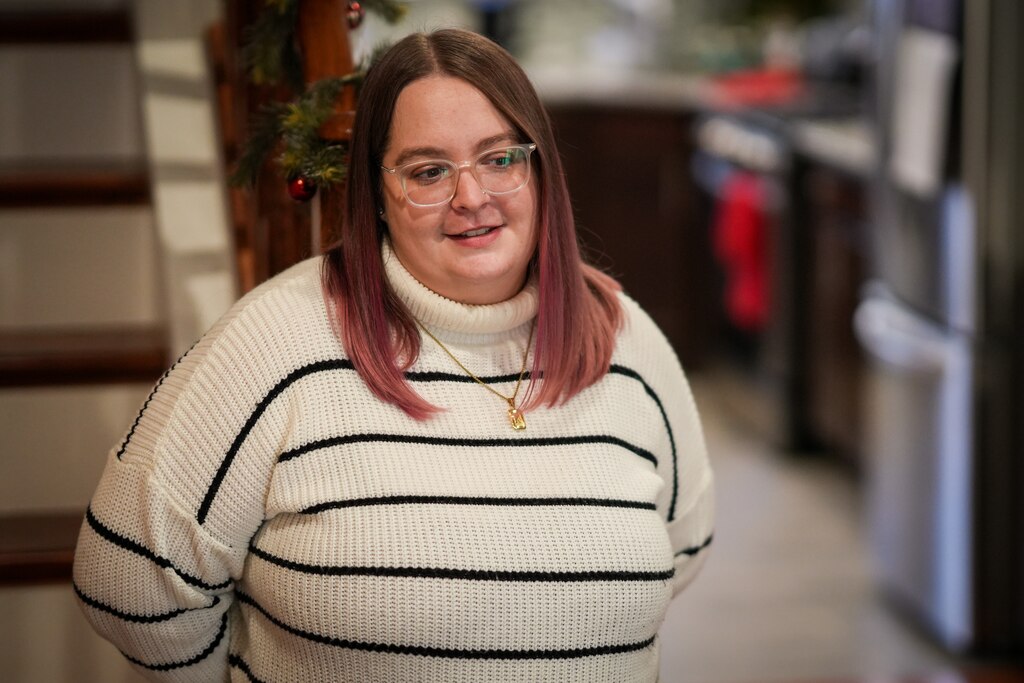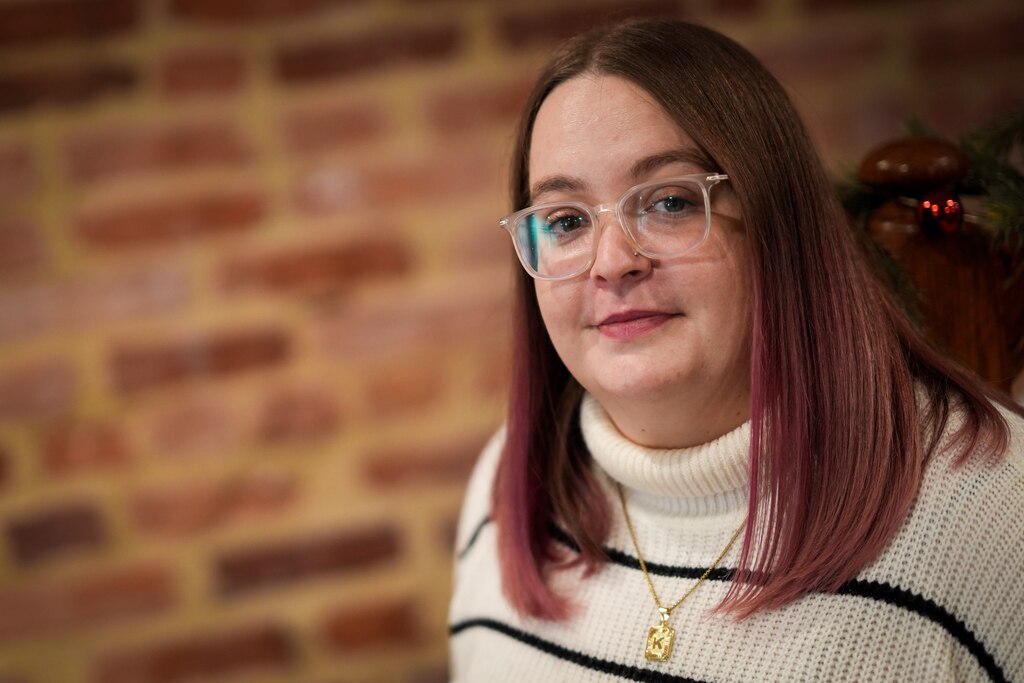Anne Palmisano once waited 10 hours on a gurney in an emergency room hallway after arriving by ambulance to a hospital in the Maryland suburbs for a severe reaction to medications. When she finally got to a room she spent several days in treatment.
Palmisano, head of the advocacy group Marylanders for Patient Rights, said she’s heard many stories of long waits in Maryland emergency departments.
Hospital leaders have been warning the public to expect as much during the nearly three-year coronavirus pandemic and the recent wave of respiratory viruses that have exhausted and depleted the health care workforce. They’ve asked people to use urgent care or their doctors’ offices when possible.
Palmisano says, however, the extensive time it takes to get in and out of an emergency room predates the so-called tripledemic; her experience was in 2015. Maryland now has the longest average wait time in the country at 228 minutes, according to data from the Centers for Medicare and Medicaid Services. She believes it’s time to look into why.
“I didn’t see a pattern, like it was all the busy hospitals in Baltimore pushing up the times,” she said. “It’s all over [the state] and it’s something we need to address and stop shrugging our shoulders.”
Hospital leaders don’t dispute sometimes long wait times but say problems aren’t easily fixed. They have taken steps in recent years, such as opening newer, larger facilities. They are working with nursing schools and local and state leaders to bolster the workforce through recruitment, retention and training efforts.
The needs remain huge, however. One in four nursing positions in hospitals in the state remains vacant, according to the Maryland Hospital Association.
“Though they are making great strides, the number of people seeking care at hospital emergency rooms has not decreased, while the hospital workforce continues to face critical shortages,” said Nicole Stallings, executive vice president of the Maryland Hospital Association.
Palmisano believes there may be helpful models in other states. She is supporting a bill next year in the General Assembly put forward by Sen.-elect Karen Lewis Young, a Frederick Democrat who spent years writing health legislation in the House of Delegates. It would create a task force to study the problem and consider processes in other similarly sized states with at least one city of 500,000 residents.
Palmisano cited Indiana and Missouri as two possible model states. She cited an analysis of the federal data by IT service automation company SysAid that found from January 2020 through March 2021, Indiana had the 16th shortest time spent in the emergency department, with an average of 133 minutes. She also pointed to Ohio, ranked 25th at 143 minutes.
The panel will examine staffing, triage and bed availability, according to a summary of the bill.
The idea isn’t to punish hospitals, Palmisano and Young said, rather to see what legal, regulatory or other steps are needed. The measure’s chances are unclear, but they said more immediately they wanted to draw attention to the issue that frustrates and potentially endangers patients and strains emergency rooms and staffs.
Stallings said some issues extend beyond hospital walls. The number of people with mental health and substance use disorders that come to hospitals that are not equipped to handle their needs is growing. The hospital association reports that 18.3% of hospital visits in 2021 were for behavioral health issues, up from 10.5% in 2013.
Stallings said behavioral and mental health development disorders rose rapidly during the pandemic, and Maryland does not have enough community providers to prevent emergencies. Nor are there enough places to send people after a hospital stay.
“When patients can’t easily access primary care to get treatment when their medical concerns are minor, more go to emergency rooms,” Stallings said.
“At the other end, hospitals often cannot discharge medically stable patients because outpatient services for aftercare are unavailable,” she said. “When medically cleared patients cannot leave, inpatient beds are not freed up to admit patients coming from the emergency department.”
Everyone is affected, from car crash and heart attack victims to flu patients and overdose survivors.
Those issues are real, but there is another big reason for the long waits in Maryland, said Ge Bai, professor of health policy and management in the Johns Hopkins Bloomberg School of Public Health. Maryland law requires hospitals to obtain a “certificate of need” from the state to launch or expand services, a lengthy regulatory process than can muck up the works.
“When you look at what’s different in Maryland, it isn’t that people are more willing to go to the emergency room because they don’t have primary care doctors,” Bai said, adding Marylanders have an above-average level of health insurance. “The cause for our ER traffic jam is not that we have too many patients going to ER, but we allow too few roads to be built.”
Bai said she believes the law is well intentioned. It aims to ensure hospitals offer needed services wherever they’re needed. But it can have the “unintended consequence” of slowing or stopping access, especially if the process is “captured by special interests who aren’t interested in competition.”
The law also may unintentionally prevent hospitals from preparing for patient surges because the need is based on average patient flows.
The law isn’t unique to Maryland, but Bai said states with the shortest wait times don’t have a similar law or have a more flexible version. She said nine of 10 states in a 2020 Kaiser Health News ranking of the longest wait times for a hospital room do have such laws. Maryland was fourth in that ranking.
“If someone is going to look at reasons for the long wait times in Maryland, they ought to look at this law,” she said.
Kelly Jones wasn’t much concerned with laws last month when she went to Johns Hopkins Bayview’s emergency room for leg and back pain so extreme she couldn’t walk and nearly passed out. Jones, a 34-year-old Baltimore woman, had been diagnosed with a degenerative disc disorder and was weeks away from a shot in her spine to reduce inflammation. But she felt panicked by the spike in pain.

Her father sat with her for nine hours on a bench. A nurse eventually took her vital signs and gave her two Tylenol, for which she was billed $144. They left when told the wait would be 26 hours.
“I was aware of the situation in emergency rooms, how busy they were, and I have some sympathy for the nurses and other staff,” Jones said.
“I actually called a friend who was a parent and asked when you decide if you absolutely need to go to the emergency room,” she said. “She said to go. My mom, who also has degenerative disc disease, said go. But when I was there I was so uncomfortable. I thought, I have Tylenol at home. I have a heating pad at home. I can’t lay on this bench anymore.”
Jones managed at home for a few days before another spike in pain. This time she chose the suburban emergency room of Hopkins affiliate Howard County General, though federal data shows community hospitals are not all speedier. Specific hospital emergency room wait times can be found on the CMS website.
Emergency rooms, Jones said, “Should be there when you have an emergency.”

Kim Hoppe, a Hopkins spokeswoman, said officials were aware of “the challenges concerning wait times in emergency departments across the country and throughout our state. Addressing this issue is a top priority.” She said they were working on internal processes, but that they seek to ensure that if there is not bed, the patients are assessed quickly and continuously.
“We will continue to work diligently to minimize delays and will continue to collaborate with health care providers and leaders nationally to work toward lasting solutions for complex challenges like these,” Hoppe said.
Palmisano and Young want to be in on the conversation to identify “best practices” in law, regulation or procedures.
“We know it’s a problem, and we need to get a better understanding,” Young said. “It could be different from hospital to hospital, with one hospital experiencing a shortage of staff and another with a triage issue. We need to look at states that are lower on the list and see what they’re doing right.”


Comments
Welcome to The Banner's subscriber-only commenting community. Please review our community guidelines.